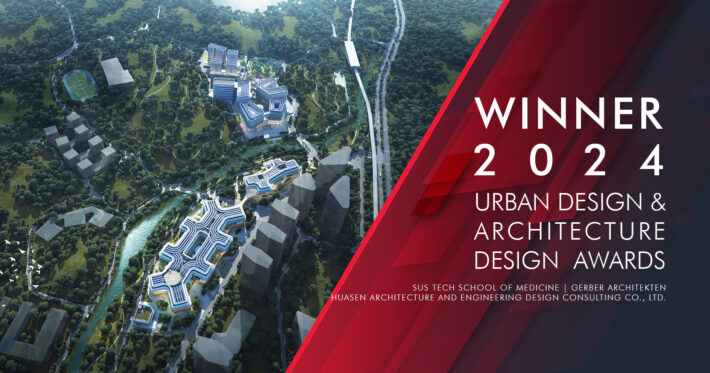This project consists of an affiliated hospital of 167,600 sqm and a medical school of 164,000 sqm, which will be integrated into a function sharing complex with both educational and medical program. Along with the concept of “Shanshui Pulse”, the shape of buildings that are embedded in the nature echoes with their multiple function needs, exploring the connection between human, nature, and space, as well as creating a harmonious architectural form that blends city and nature.
Urban Design & Architecture Design Awards 2025: Entries Open!
Take your work to the next level. Register Now…
Gold 🏆 Winner
Urban Design & Architecture Design Awards 2024
SUSTech School of Medicine
Educational Architecture (Under Construction)
Firm
Gerber Architekten/ Huasen Architecture and Engineering Design Consulting Co., Ltd.
Architect/Designer
Prof. Eckhard Gerber
Design Team
Marius Ryrko, Bo Li, Pin Lu, Haixi Zhu, Mario Barkley, Dongyue Tan, Sean Hoo Chng, Yu Lin, Diwen Yang, Shutian Jiang, Szabolcs Veress, Qi Lin, Yabing Liu
Location
SUSTech, Shenzhen, China
Country
China
Photographer/Copyright
©Gerber Architekten
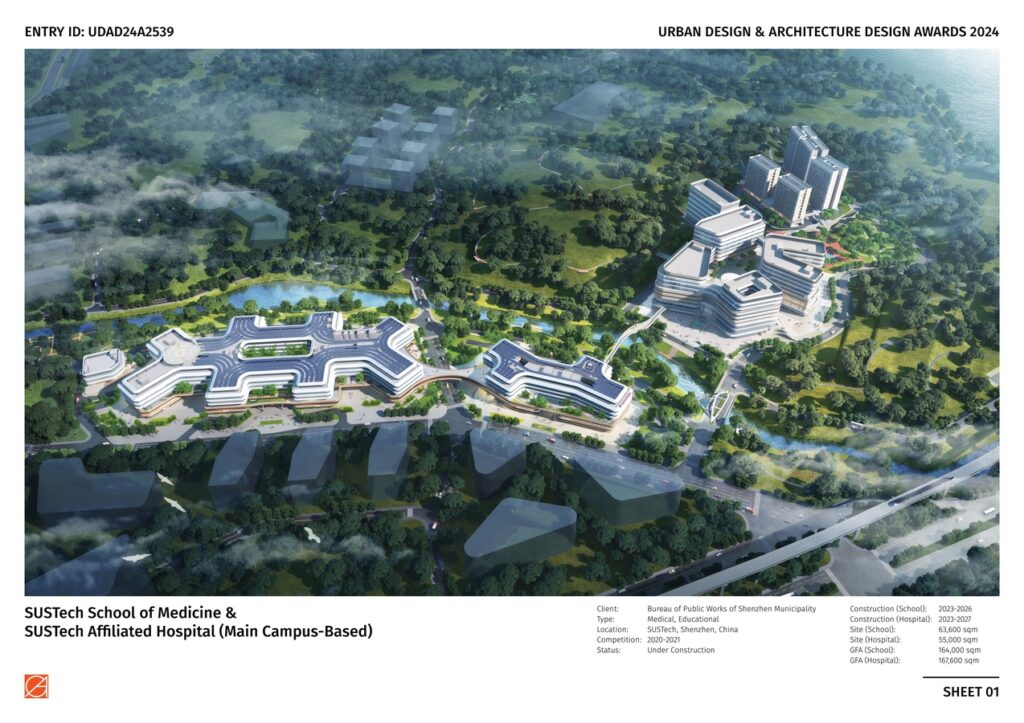
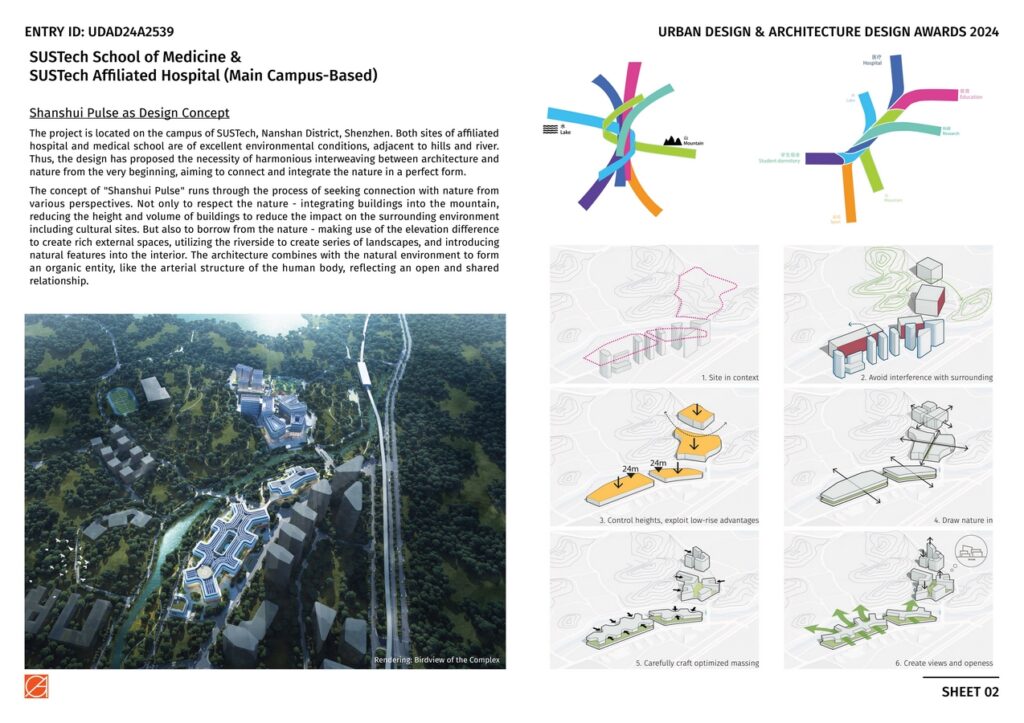
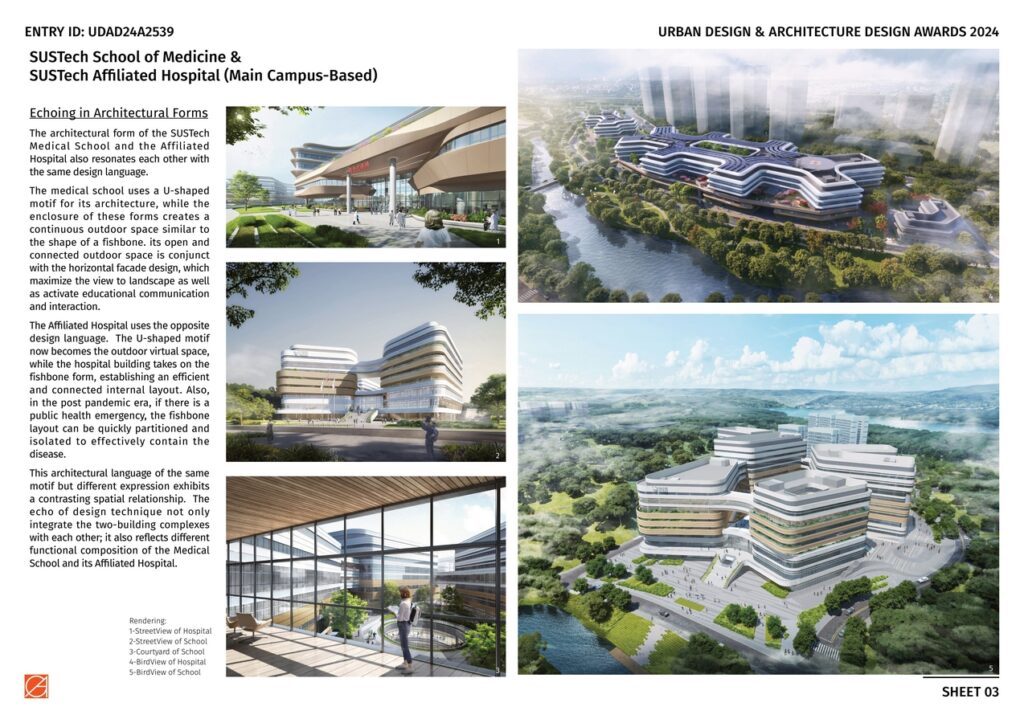
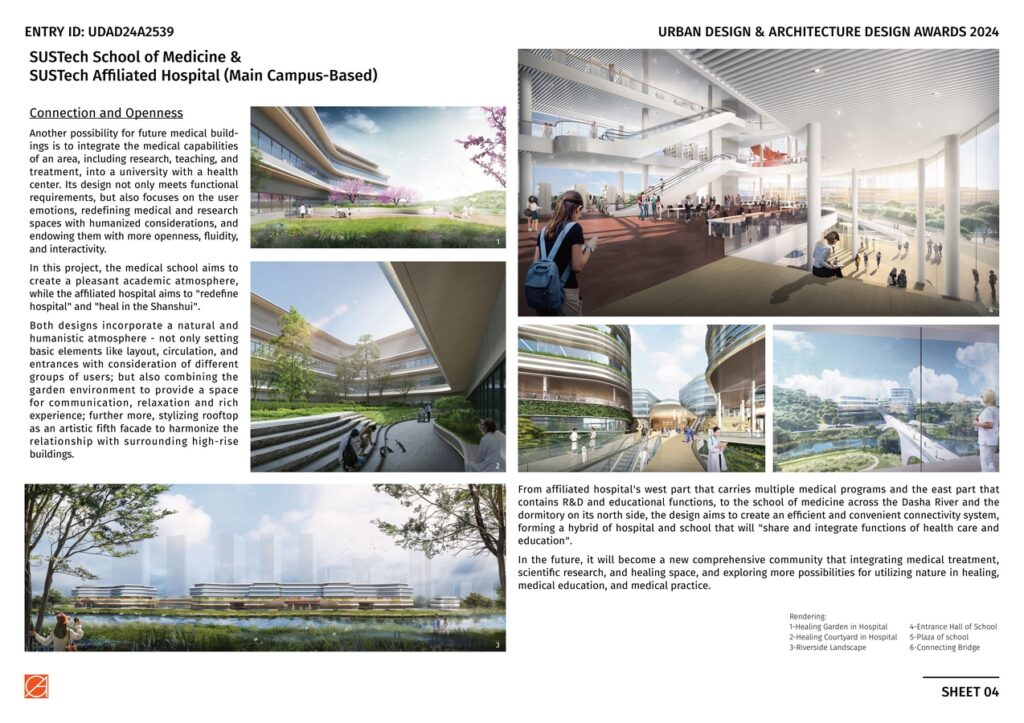
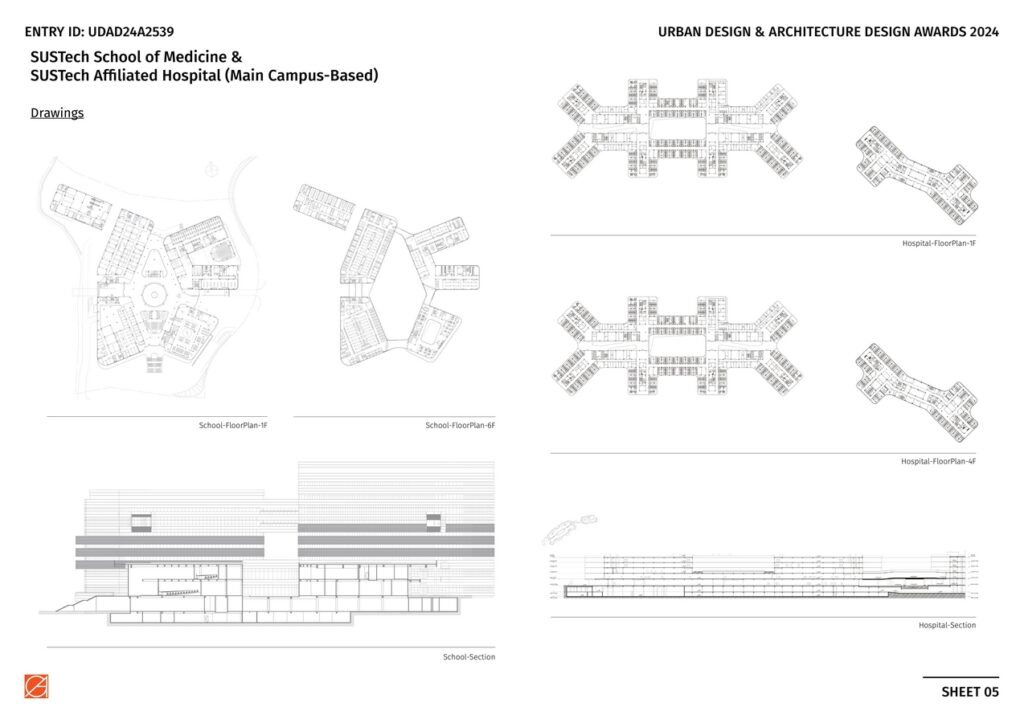
Shanshui Pulse as Design Concept
The concept of “Shanshui Pulse” runs through the process of seeking connection with nature from various perspectives.
Not only to respect the nature – integrating buildings into the mountain, reducing the height and volume of buildings to reduce the impact on the surrounding environment including cultural sites.
But also to borrow from the nature – making use of the elevation difference to create rich external spaces, utilizing the riverside to create series of landscapes, and introducing natural features into the interior.
The architecture combines with the natural environment to form an organic entity, like the arterial structure of the human body, reflecting an open and shared relationship.
Echoing in Architectural Forms
The architectural form of the SUSTech Medical School and the Affiliated Hospital also resonates each other with the same design language.
The medical school uses a U-shaped motif for its architecture, while the enclosure of these forms creates a continuous outdoor space similar to the shape of a fishbone. its open and connected outdoor space is conjunct with the horizontal facade design, which maximize the view to landscape as well as activate educational communication and interaction.
The Affiliated Hospital uses the opposite design language. The U-shaped motif now becomes the outdoor virtual space, while the hospital building takes on the fishbone form, establishing an efficient and connected internal layout.
This architectural language of the same motif but different expression exhibits a contrasting spatial relationship. The echo of design technique not only integrate the two-building complexes with each other; it also reflects different functional composition of the Medical School and its Affiliated Hospital.
Connection and Openness
Another possibility for future medical buildings is to integrate the medical capabilities of an area, including research, teaching, and treatment, into a university with a health center. Its design not only meets functional requirements, but also focuses on the user emotions, redefining medical and research spaces with humanized considerations, and endowing them with more openness, fluidity, and interactivity.
In this project, the medical school aims to create a pleasant academic atmosphere, while the affiliated hospital aims to “redefine hospital” and “heal in the Shanshui”. In the future, it will become a new comprehensive community that integrating medical treatment, scientific research, and healing space, and exploring more possibilities for utilizing nature in healing, medical education, and medical practice.


